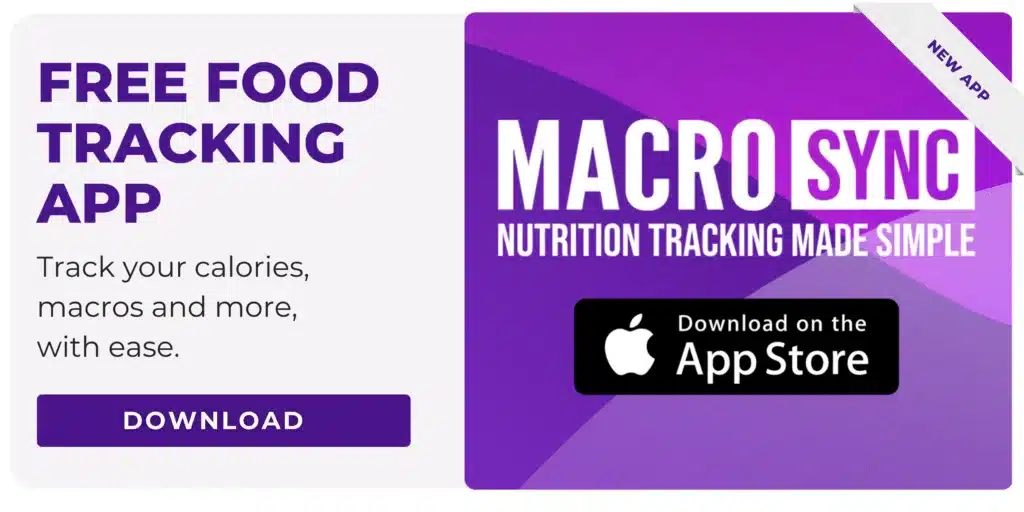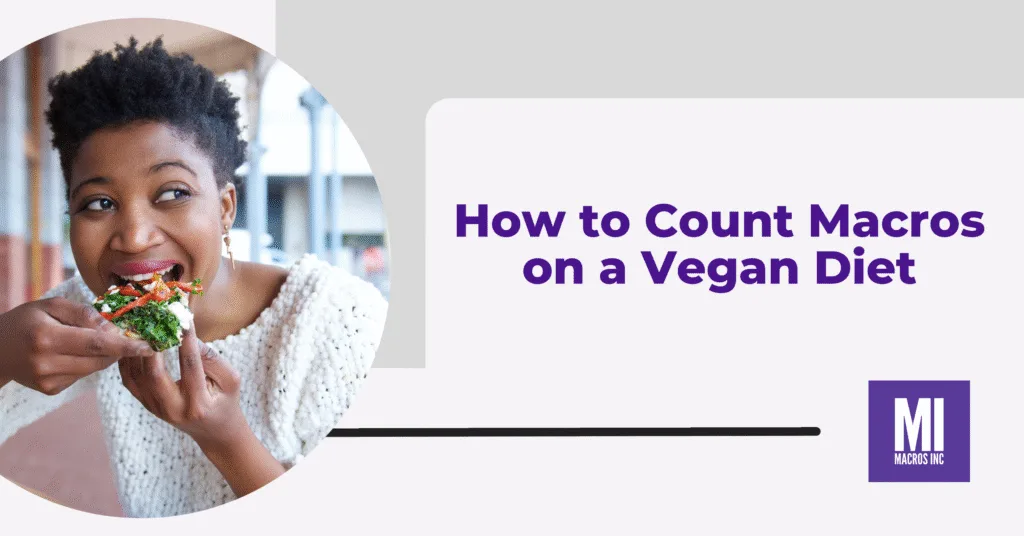If you want to start tracking your macros but not sure how to do it on a vegan diet, don’t worry—we have you covered.
Counting macros, or macro tracking, in a nutshell, simply means that you’re tracking the calories in your food as well as the big blocks of nutrition—protein, carbohydrates, and fat—that make up most of the energy in your food!
And no matter what type of diet you eat—vegan, vegetarian, keto, low fat, and so forth—all food contains these building blocks.
Jump to a Topic
How to Count Macros on a Vegan Diet
Make Sure You Get Enough Protein
One thing many vegans struggle with is getting in enough protein. There are many vegan protein sources out there, and each has different concentrations of different amino acids. Amino acids are molecules that form protein.
Our bodies can create some on their own, but have to get others from food. The amino acids our body needs from food are called essential amino acids. Foods that contain all of the essential amino acids are considered “complete proteins.”
While there are a few complete proteins in the vegan diet—soy, buckwheat, quinoa, and mycoprotein, for instance—many vegan proteins have higher amounts of certain essential amino acids and lower amounts of others.
By eating a wide variety of foods, vegans can get all the amino acids they need to stay as healthy as possible! Beans, for instance, create complimentary proteins with grains, corn, and nuts/seeds. You don’t have to eat them at the same meal (although you can, and they taste great together!), but if you have them in the same day, you’ll be getting the amino acids you need!

Vegan Sources of Protein
High Protein / Low Carb Vegan Sources:
- Tofu/tempeh/soybeans/soy products
- Seitan (although this one is not a great quality protein source)
- Pea protein
- Mycoprotein (mushroom protein, i.e. Quorn)
- Lupini beans
- Algae/seaweed/spirulina/water lentils (“Lentein”) are all surprisingly high in protein by weight.
- Nutritional yeast
- Low/no sugar vegan protein powders and bars
- Unsweetened protein-enhanced plant milks
- Bean sprouts
- Many meat analogs
Other Vegan Sources Of Protein
- Beans/legumes
- Whole and sprouted grains
- Quinoa
- Many dark green vegetables (these do not provide a lot of protein, but do add to the total)
Higher Protein and Higher Fat Sources
- Flaxseeds
- Hemp seeds
- Chia seeds
- Most nuts and nut butters
Watch Your Calorie Intake
A lot of people think that going vegan generally means they’ll lose weight without even thinking about it. While it is true that many people who go vegan lose weight, that generally happens because they end up eating a lot more veggies and cut out many high-calorie things such as cheese, high-fat meats, and butter.
But a lot of the time, people replace those things with other high-calorie things- vegan snack foods, desserts, and baked goods (which are really easy to over-eat!), and fried foods. Plus, many types of alcohol are still vegan, as are sodas, juices, and other soft drinks.
These are very easy places to end up overdoing it in the calorie department because they don’t make you feel very full, and because a lot of people don’t think about calories coming from their beverages!
Even healthy foods like avocado, nuts, seeds, nut butters, and seed butters are still high in calories and easy to eat a lot of. That’s why it helps a lot to track your food—even the healthy stuff—to get a good idea of how many calories you’re actually eating in a day, and what a serving size looks like.
You don’t have to track forever, but using it as an educational tool can be a really great place to start, whether you’re trying to lose weight, maintain, or put on some muscle.
Track Your Macros
To start, you’ll want to run our Macro Calculator to ensure you’re tracking towards the right numbers for your individual needs.
Tracking can also show you if you’re undereating, and that also happens a lot when people go vegan! You definitely want to make sure you’re getting the energy and nutrients you need to get through all the activities you do in a day.
While eating fewer calories than you burn off is important for fat loss, going too low in calories can lead to nutritional deficiencies and can leave you with not enough energy to get through what you need to get done in your day, let alone put your all into your workouts!

Another helpful thing that tracking will show you is if you have any nutritional holes in your diet. It’s really common, for instance, for people to undereat fiber. Vegans tend to eat more fiber than non-vegans, but that is not the case for everyone!
Ensuring that you get a minimum of 25g fiber every day is a really good baseline to start with. Many vegans undereat protein as well, so tracking macros can be a great way to figure out how to get enough protein in your day.
Tracking macros can be an extremely useful tool for all kinds of diets, including the vegan diet. It helps you understand how much food you need to eat in a day to move towards your goals, and it shines a light on any places your diet might need some improvement. Give it a try—you might be surprised at what you learn!
Wrap Up:
Counting macros on a vegan diet doesn’t have to be complicated; it’s simply about learning what’s in your food and making it work for your goals. By focusing on protein-rich plant sources, being mindful of calories, and tracking consistently, you’ll set yourself up for success. And the best part? Once you understand how to count macros on a vegan diet, you’ll have the tools to build a balanced, sustainable way of eating that actually works for you long term.
If you’d like some extra guidance with your nutrition, our coaches are here to help you put it all into action and reach your goals faster.
Try our nutrition coaching, for free!
Be the next success story. Over 30,000 have trusted Macros Inc to transform their health.
Simply fill out the form below to start your 14-day risk-free journey. Let's achieve your goals together!

